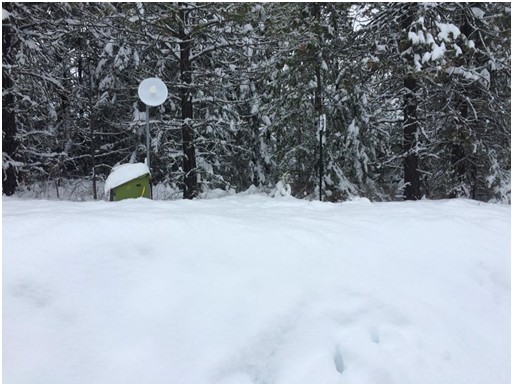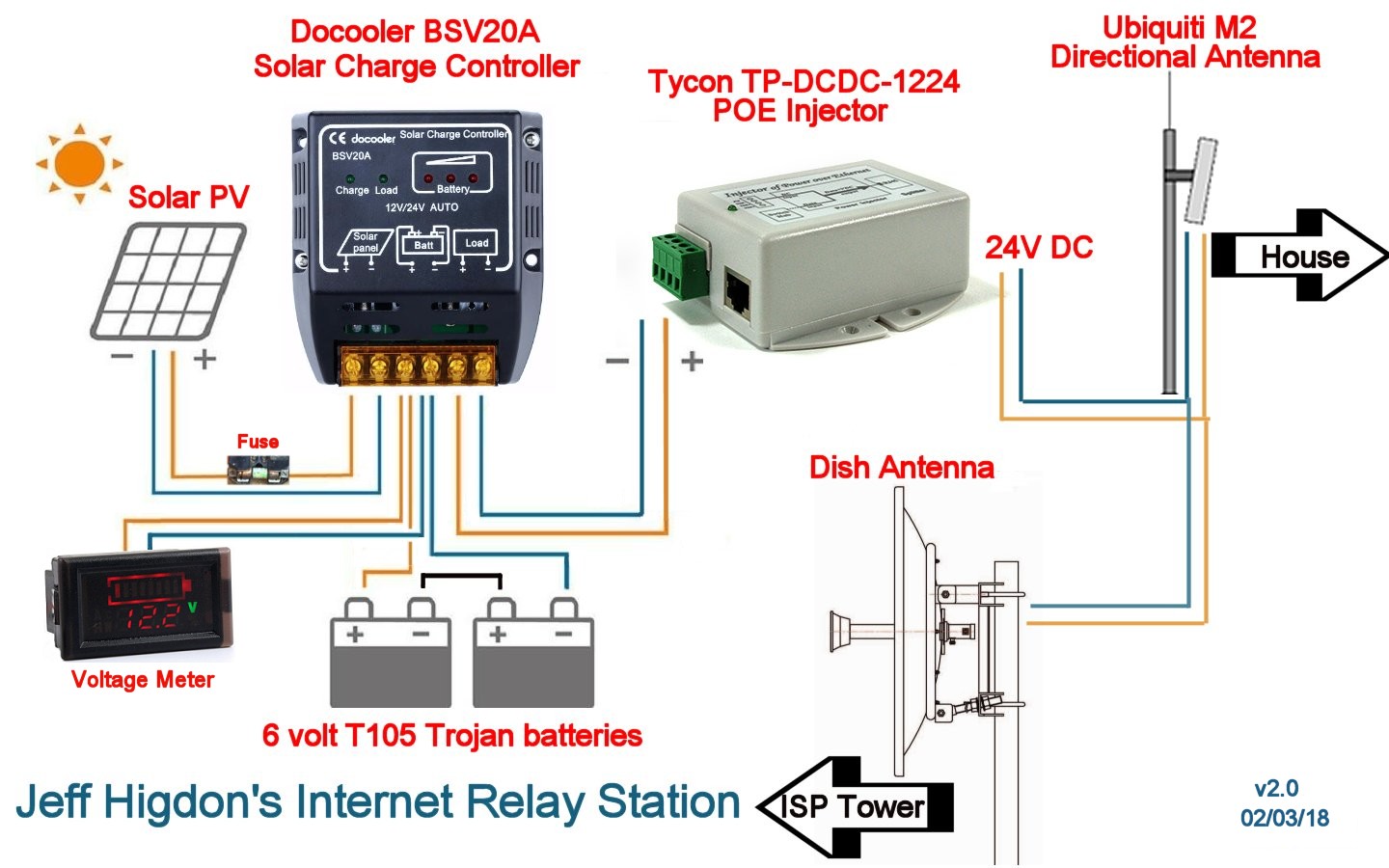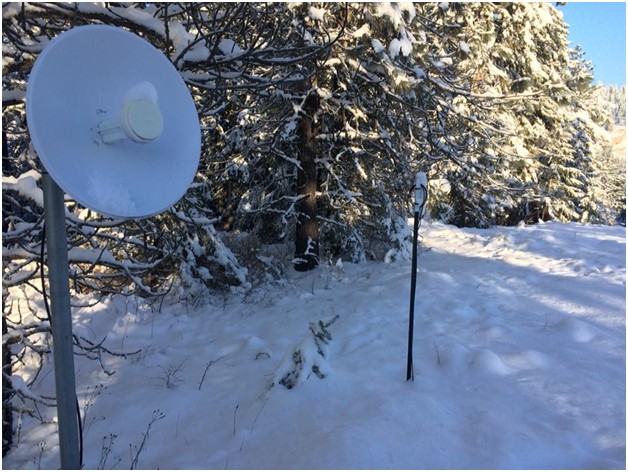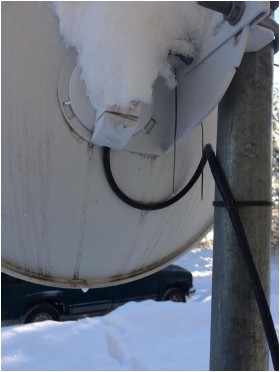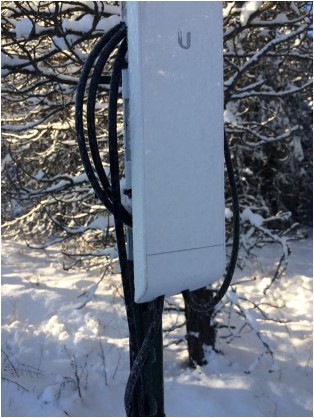User talk:Alanmcrae
Welcome to Open Source Ecology! We hope you will contribute much and well. You will probably want to read the help pages. Again, welcome and have fun! Marcin (talk) 02:09, 3 February 2018 (CET)
Off-Grid Internet Relay Station
PROBLEM:
Jeff Higdon had a common problem for homesteaders in deeply rural areas: no internet service easily available. No DSL, no cable, and definitely no fiber. Satellite internet is notoriously slow with bursts of very high latency, so not a great choice. What to do?
ANALYSIS:
Jeff did some research and found that a local ISP had several fiber-connected microwave relay towers in the mountains around his homestead, but climbing a tree next to his house and looking around he saw that he didn't have a clear line of sight to any of them. Walking 600 feet towards a neighbor's property, he found a clear line of sight to one of the towers and a clear line of sight to his house. How to relay the microwave signal from the mountain to his house?
SOLUTION:
Jeff needed to build an off-grid, solar powered, internet relay station.
Jeff Higdon If you look closely there are two antennas here. One is the receiving dish from my internet provider, the other is the flat antenna mounted in a T-post pointed towards my house to relay it. This setup consumes 1 amp per hour. When fully charged, my two 6 volt T105 Trojan batteries will last about 5 days with no charge from the sun.
With these antennas, everything requires line of sight and a pair of antennas, one broadcasting and the other receiving. Depending on how wide of an angle the broadcasting antenna will broadcast, you can set up multiple receiving antennas at different locations. You can also set up relays to bounce the signal around any obstacles to line of sight.
This is what I’ve done. The internet provider has a fiber optic connection that he broadcast from the roof of his building to at least three separate towers many miles away. My place is in a Valley and can’t see a tower, so 600’ from my house I set up the relay. The dish receives the signal from the tower which is line of sight and several miles away. I then run a cable a short distance down the hill and have a second antenna that is broadcasting line of site to my storage building.
On top of my storage building is a third antenna that is receiving that signal. A Ethernet cable runs from that antenna underground to my trailer house inside to a POE (Power Over Ethernet) injector that is supplying power to the antenna, cable comes out of that and goes into my WiFi router that then distributes the signal through the house.
SYSTEM DIAGRAM:
RESULTS:
Speed Test: Currently 1.2 Mbps download, 0.89 up on the speed test I just ran. I pay for 1 meg down, 0.5 Up, so they are giving me more than I pay for. Usually it runs around 2 megs down, .75 up. When we tested it at install it was doing 5 Mbps down which at the time was the maximum speed of the tower. I think it has since upgraded to be able to do 10 down, which cost $75 per month. However I have the cheapest plan which is $37/month. I know it is capable of much more than I can purchase but I don’t remember what that is.
COMPONENTS DETAILS:
Jeff Higdon I used ubiquity antennas. I had my internet provider program them for me. The dish is a 2.4 GHz Ubiquity nano beam M2 400 I believe. I did not find the model on the unit but when I looked it up I think that is the one. I know the flat one is the M2 2.4 GHz model.
I was going to purchase them online but when I decided to go through the internet provider to program them I let him purchase them and make a little profit so I don’t have the paperwork on them.
